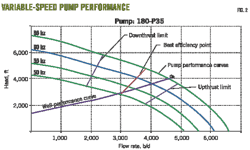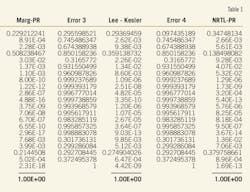Gas output, light-oil needs reshaping condensate trade
Rising production of natural gas and the growing need for light products are reshaping the market for condensate, especially in the East of Suez region encompassing the Middle East and Asia.
Once considered a niche product, condensate over the past decade has moved into the mainstream of gas development and trade in crude oil and petroleum products, says a new study focusing on the East of Suez region by Asia Pacific Energy Consulting (APEC), Houston.
Markets are discovering the material's flexibility of use, low levels of sulfur and other contaminants, and intrinsically high yield of light products, the study says.
Other key findings, from the study's executive summary, follow.
Supply trends
Because condensate—a natural gas liquid that remains liquid without refrigeration or compression once it condenses—is linked to gas production, its price is relatively inelastic. The material, along with lighter liquids, must be separated from produced gas before the gas can be transported by pipeline or liquefied. Once storage is full, therefore, condensate must be sold, regardless of price, as long as gas is produced.
With gas-field developments delayed by the recent recession now reviving, gas production will increase. Delayed condensate splitters also are back in development. In the East of Suez region, where gas exploration and development is strong, segregated-condensate output might double by 2018.
Output will increase most in Saudi Arabia and Qatar, which will boost production by 500,000 b/d by 2013. The United Arab Emirates will increase production by nearly 400,000 b/d in that period. Condensate from these and other producers in the Middle East tend to yield large volumes of paraffinic naphtha.
Major production gains from Asia-Pacific will come from Australia and China, later than those in the Middle East. Asia-Pacific condensates tend to yield naphthenic and aromatic naphtha.
Middle East exports
While Middle Eastern suppliers try to limit condensate sales abroad, they still must export volumes beyond their own needs. In Qatar and Saudi Arabia, especially, production gains will outrun the addition of processing capacity able to use new increments of condensate.
In Saudi Arabia, condensate production will increase not only from new nonassociated gas fields—notably Karan—developed to expand the Master Gas System but also from development of oil fields such as Khursaniyah, Manifa, and Khurais.
Qatar will increase its exports of products, too, despite its relatively limited refinery conversion capacity. The exports will come from field LPG, processed condensate, gas-to-liquids (GTL) output, and some refinery yield.
A gas development under way in Qatar will be completed by the end of this year, but full effect on condensate production won't be evident until 2013 as LNG, piped-gas, and GTL projects reach full capacity.
Condensate-processing projects have ceased in Iran, which will have to export some of what it produces. New condensate supply will come mainly from gas fields developed to serve domestic markets.
Abu Dhabi will have difficulty absorbing all additional condensate production even though it has substantial processing capacity.
Among other producers, Iraq will become a modest condensate exporter by 2015, Kuwait will have no segregated-condensate production through 2018 because of delays in planned gas projects, and Yemen has decided to use condensate from its LNG project to spike crude rather than segregate it.
Asia-Pacific imports
Unlike the Middle East, the Asia-Pacific region on balance needs condensate supply, including imports.
Thailand, Malaysia, and China will absorb most or all of their condensate production, while other large producers, especially Australia, will continue to sell the material abroad. Exports will increase from new, smaller producers such as Myanmar, Vietnam, Papua New Guinea, and, possibly, Bangladesh.
Increased production of condensate and splitter construction will be driven by the desire of petrochemical manufacturers for increased feedstock flexibility. Last year, condensate use for petrochemicals increased as margins grew in response to strong Chinese demand.
Southeast Asian production of segregated condensate will increase modestly in Myanmar and Vietnam. Malaysia, Thailand, and the Philippines will have little change. Indonesian output will increase sharply by 2015.
Southern Asia is dominated by India, where segregated-condensate output will remain minimal until, perhaps, gas finds off the eastern part of the country begin production later in the decade.
Papua New Guinea soon will join Australia as a small condensate exporter. New Zealand has begun to import condensate, and Australia increased its use of condensate as a refinery input in 2008-09.
In China, which has emphasized segregation of condensate produced in new fields, three splitters have been completed, and two or three more might be operating by 2015. Demand is growing rapidly in China, imports of which will rise rapidly through 2015.
Japan and South Korea, both heavy users of NGL as a petrochemical feedstock, remain Asia-Pacific's top condensate importers. Singapore's condensate imports increased sharply in 2008-09 as the country processed nearly 200,000 b/d.
Thailand remains the region's petrochemical manufacturer most heavily dependent on condensate and the only importer that also uses substantial amounts of ethane. Taiwan uses minor amounts of condensate.
Splitter construction
As the number of condensate splitters in the East of Suez region has increased over the past decade, the size of new splitters has grown.
In the Middle East, the normal size is now 100,000-200,000 b/d, while in Asia-Pacific it is 30,000-70,000 b/d.
At the beginning of 2010, East of Suez splitting capacity totaled 2.16 million b/d, 52.4% of it around the Middle East Gulf (Fig. 1).
The gulf will retain its dominance through 2015, when total splitter and petrochemical pretreatment capacity will exceed 4 million b/d. Nevertheless, China will add substantial condensate-processing capacity by the middle of the decade, and new splitters are planned in Thailand, Singapore, and North Korea.
In Asia-Pacific, the motivation for adding condensate-processing capacity is the expansion of demand for petrochemical feedstock and the need for feedstock flexibility.
The motivations for splitter construction around the Mideast Gulf are increased demand for gasoline and adding value.
Pricing and trade
Condensate is traded under a variety of pricing systems in a reflection of its versatility. In general, refinery buyers prefer pricing linked to crude values, while petrochemical buyers tend to prefer naphtha linkage.
At present, refinery and petrochemical condensate valuations are diverging because of refining weakness and the relative strength of petrochemical markets in the East of Suez region (Fig. 2). The trend probably won't last.
In the medium term, condensate, naphtha, and gasoline will increasingly become integrated, interacting in trading and pricing. Similarly, interplays among gas and NGLs, including the effects condensate and LPG have on each other, are being recognized by gas planners.
As the global economy resumes growth, Asia-Pacific will continue to lead growth in demand for oil and petrochemicals and in expansion of base petrochemical capacity. Condensate will be crucial to feedstock supply.
But the region will remain structurally dependent on condensate, crude, and oil products from the Middle East. A possible development is the movement of Middle Eastern exporters into Asian downstream developments, offering discounts on supplies of LPG, condensate, and naphtha feedstocks.
With Russia now able to export crude to Asia via the East Siberia-Pacific Ocean pipeline, however, the country also might also see Asia as a market for condensate produced in the Russian Far East. Intermittent Russian exports of condensate to Asia have begun. Volumes could become regular and larger by the end of the decade.
The full study, Condensate East of Suez 2010, is available for purchase through the Oil & Gas Journal Online Research Center, http://www.pennenergy.com/index/condensate.html..More Oil & Gas Journal Current Issue Articles
More Oil & Gas Journal Archives Issue Articles
View Oil and Gas Articles on PennEnergy.com


